Tech News
Best Vacuum for Pet Hair for 2024 - CNET
What is the best vacuum for pet hair?
We love our pets, but the hair, dust and other debris that these furry friends leave behind is not so great. This is why some of the best vacuum manufacturers have dedicated so many resources to creating robot and stick vacs that are specially tuned to try and collect as much of the mess pets leave behind as possible. We've spent hours testing dozens of vacs from cordless to the robotic variety to find the best vacuums for pet hair so you can enjoy having your pet in your home but not their hair. At the top of this list is the Dyson V15 Detect, which also happens to be one of the overall best cordless vacuums for 2024.
But if you're like me and your pets shed faster and more than you have the time to spend constantly cleaning, then you'll likely be interested in one of our top-rated robot vacuums. For that category, you need look no further than the iRobot Roomba J7 Plus. If you prefer to explore even more options, we have several picks proficient at pet hair removal for you to consider in a range of prices to help you find a great vacuum for cleaning up pet hair at home.
Best vacuum for pet hair for 2024
Factors to consider when buying a vacuum cleaner
Vacuum type: Robot vs. cordless stick
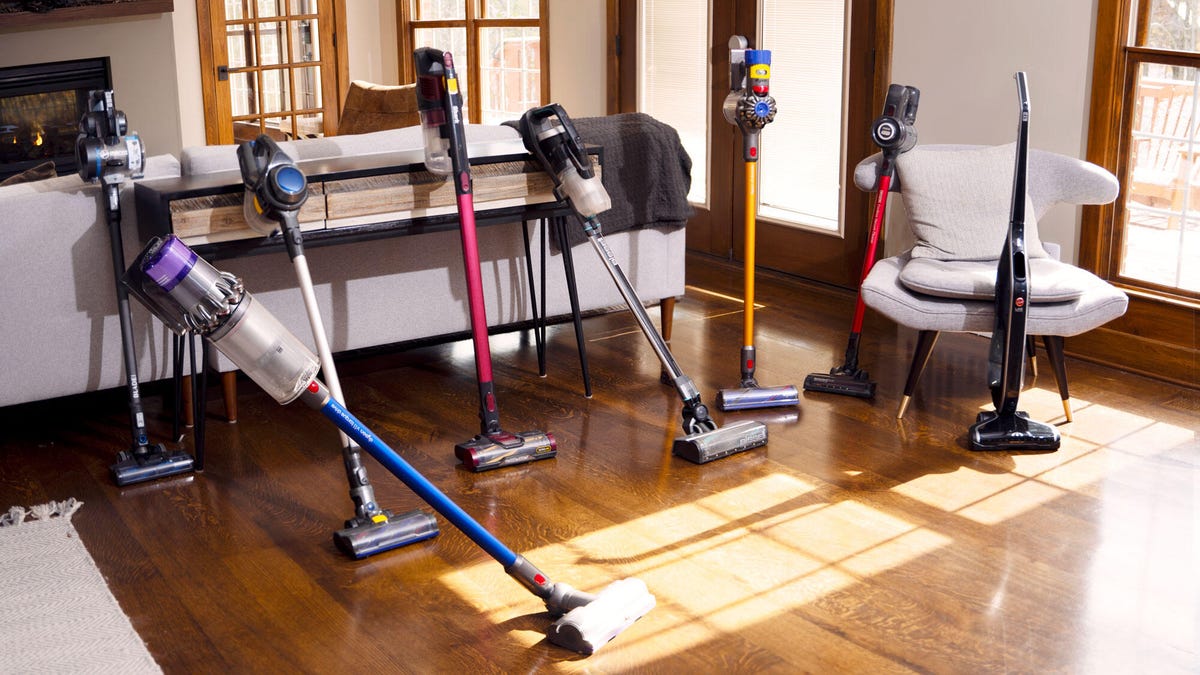
Cordless, handheld, or robot we've tested dozens to find the best vacuum for pet hair on the market.
Tyler Lizenby/CNETFloor care is a broad category these days with seemingly a tool dedicated to nearly any way you want to get your floors sparkling. While there is still a place for a plug-in style vacuum, but with advances in battery technology, wire-free devices are far more convenient.
When considering a cordless stick-type vacuum, you will get the best results when using it on hard surfaces. This is mostly due to the fact that the cleaning head is much lighter than that of a cord-style vac and struggles to stay pressed to the surface. But that lightweight is exactly what makes these devices so great. Being able to easily move from room to room, literally cleaning from top to bottom, you can get much more done. An excellent cordless vacuum can be the perfect tool to get pet hair picked up from all over the house, and it won't wear you down in the process.
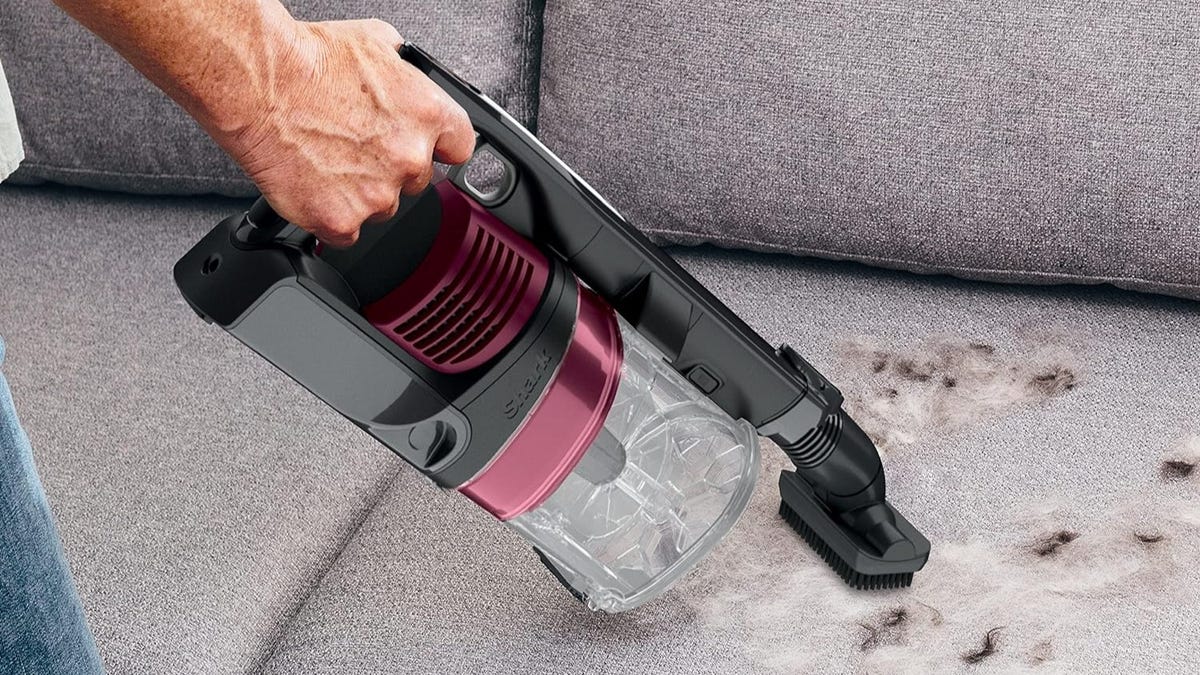
The Shark Rocket Pet Pro Cordless Vac offers a lot of powerful cleaning features for a decent price.
AmazonFor some, even the effort required to use a cordless vacuum can be too much or requires time that isn't available. In these instances, getting one of the best robot vacuums can really be the ticket. These devices are the ultimate time-saver and multitasking products, allowing you to free up your time to do other things. However, there are some areas the robot vacuum can't go, like on the couch. So, there are limitations to this type of vacuum, too.
Cost and value
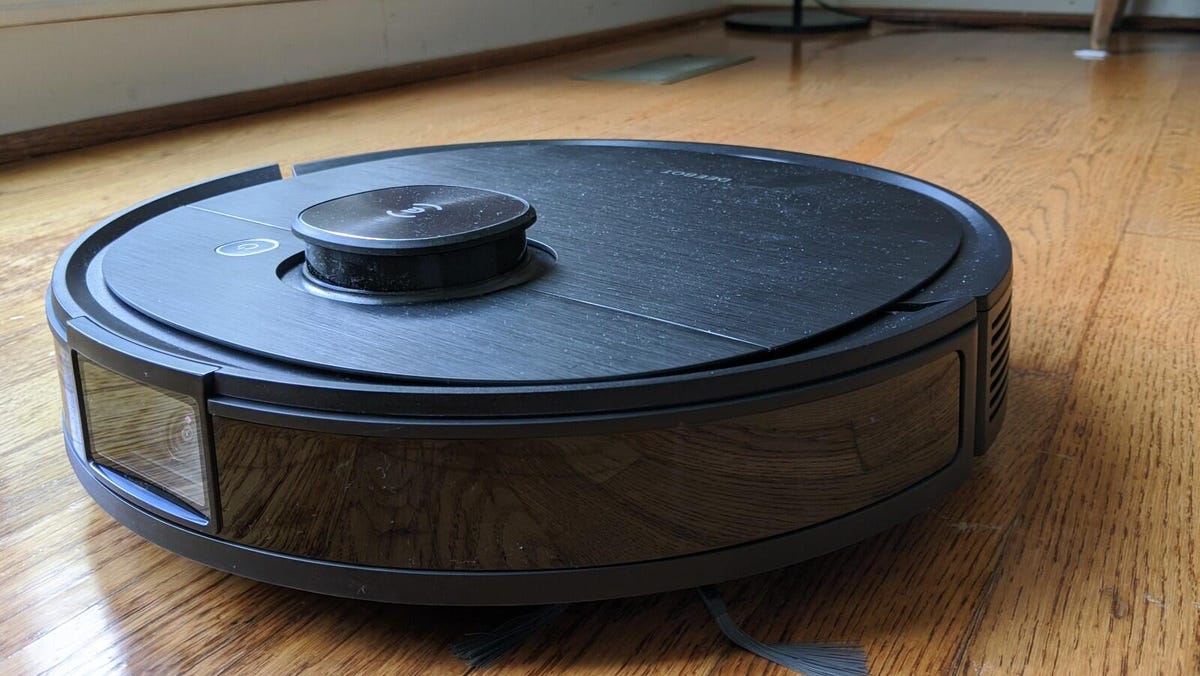
The Deebot Osmo T8 from Ecovacs is a vacuum that is highly capable of doing a great job of cleaning up your home without being overly expensive.
Brian Bennett/CNETWhether something is expensive or not is largely in the eye of the beholder. Though we do offer what is considered to be value options on this list, you are still looking at a minimum of a few hundred dollars to get a great vacuum for pet hair. That is the out-of-pocket cost, then you have to consider the cost of your time.
Using a stick vac will require you to physically be involved in the cleaning process by walking around and pushing the vacuum around to pick up the mess caused by your pet. Whereas a robot vacuum will cost you more than most cordless vacuums, you won't have to be involved in the cleaning process nearly as much. This is what is considered a value proposition. If saving $100 or more upfront is the most important thing to you, then look at the lower-cost items on this list or save even more money with a product from our best cheap vacuums list.
But if time is more important to you, then picking up a robot vacuum, which is usually more expensive than cordless options, is the way to go. You'll have trade-offs with this style of vacuum compared to a stick vac, but you can utilize the time saved for other things.
Floor type
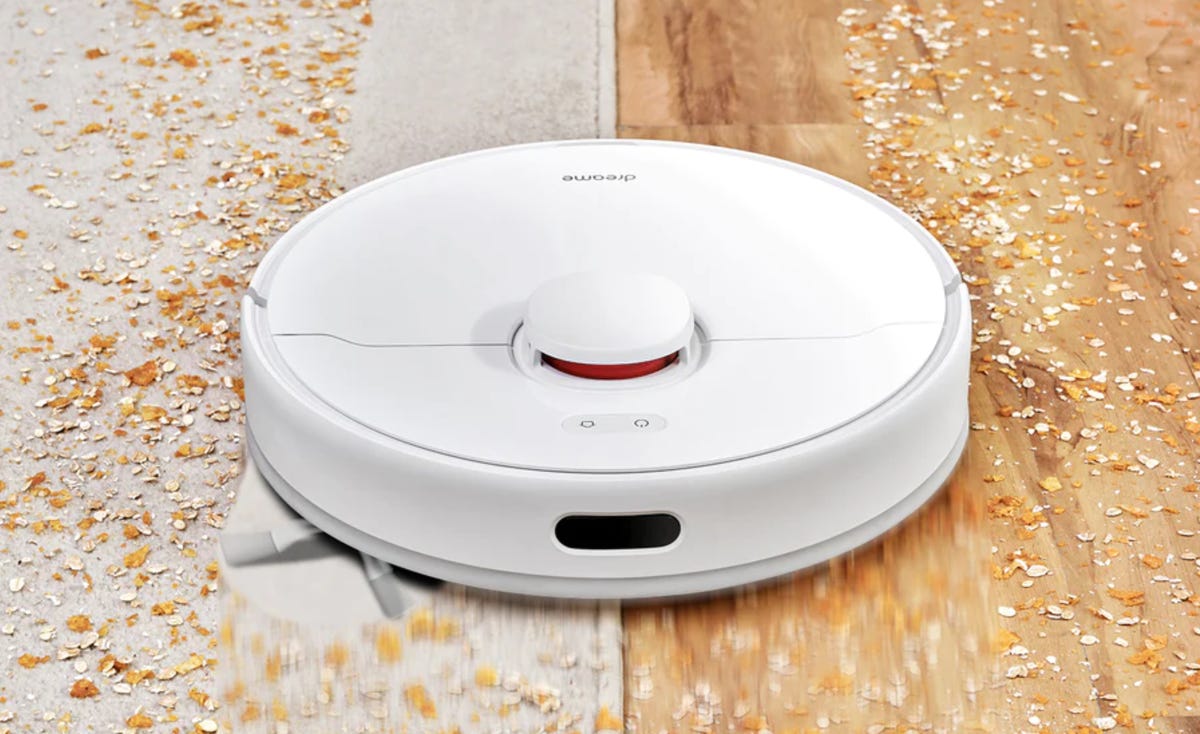
These vacuums are all designed to handle different flooring types, but may not be as effective on carpets.
DreametechMost homes today have multiple types of flooring, from wood and tile to carpets and rugs. Each of these surfaces can pose different problems for floor cleaning devices. However, typically, the hard surface types tend to be the easiest to clean up for both cordless and robot vacuums.
Carpets and pet hair go together really well, but makes it more difficult to clean. While you can usually get all the dirt and other loose debris out with relative ease, pet hair gets intertwined with the carpet fabrics and requires more power to remove. Cordless vacuums are very versatile in where they can be used, but the design of the brush head can sometimes be less effective at cleaning hair from carpets since it is so light. However, stick vacs are excellent at cleaning up hard surfaces.
Robot vacuums tend to offer similar or better cleaning results on carpet, but in order to keep the devices as small as possible, they tend to be more underpowered than a stick vacuum. Regardless of that, robo vacs do excellent on hard surfaces and can be a solid all-around choice if it works for your home's flooring setup.
How we test vacuum cleaners at CNET
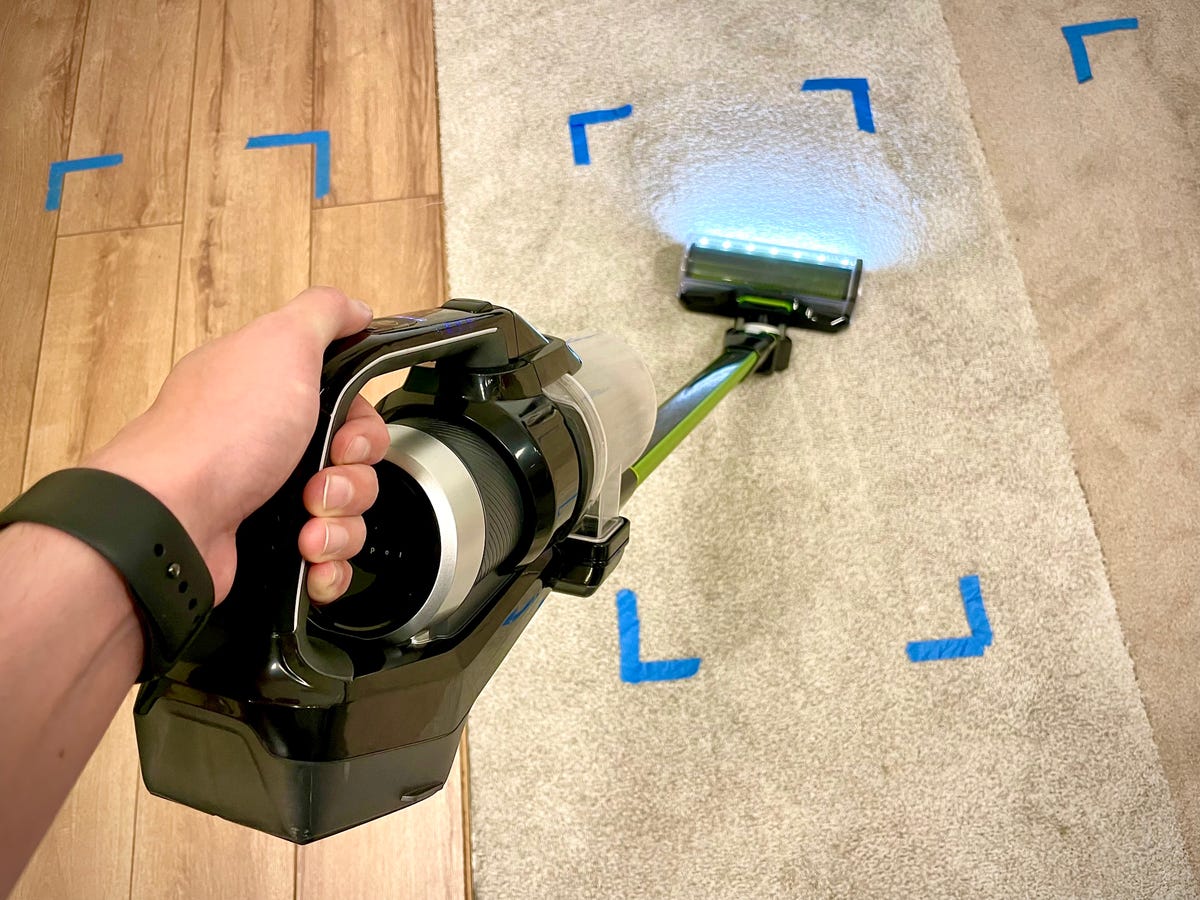
Here at CNET we put all of our vacuums through multiple rounds of testing to ensure we offer the best advice to you.
Ry Crist/CNETHow we test robot vacuums
Our method for evaluating robot vacuums is straightforward, yet grueling. There are two types of tests we run. The first trial is to figure out how well a robot covers the floor while it's cleaning. We built an industry-standard testing room as specified by the International Electrotechnical Commission just for this purpose. The IEC is an international standards body responsible for managing robot vacuum testing procedures, among other things, for vacuum manufacturers.
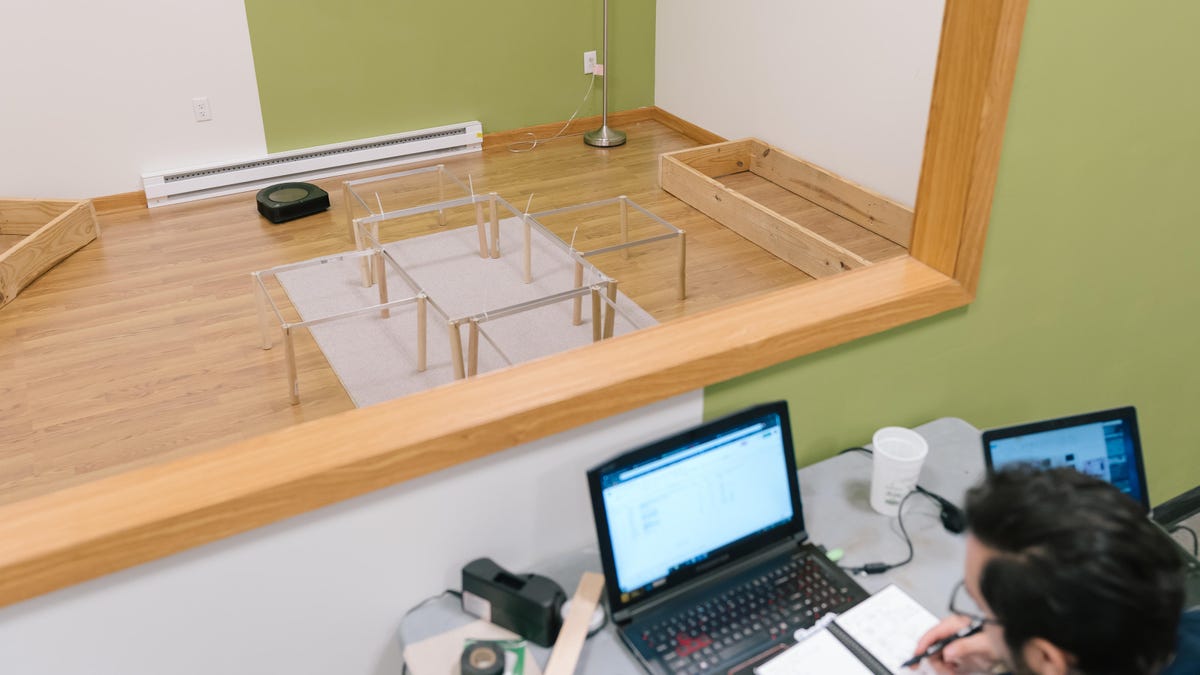
We watch what robot vacuums do inside the test room closely.
Tyler Lizenby/CNETInside this room are objects designed to simulate typical obstacles a robot vac encounters for navigation as it cleans. These obstacles include wall edges, table and chair legs, couches and other furniture, and so on, plus bare tile and hardwood floors, as well as carpet. We mount LED lights to the top of each vacuum cleaner. The dimensions of the lights correspond to the measured nozzle width of each particular robot vacuum we test.
As robots move through the room while cleaning, an overhead camera captures a long-exposure image of the entire room in low light. That photo will then have a light trail, created by the LEDs, that shows the exact areas where the robot traveled (and its nozzle position) during its runtime. We can also see areas of the floor where the vacuum may have missed or gotten stuck. You can see the navigation results of all the robot vacuums in our test group in the gallery below.
The second type of test reveals exactly how much physical debris a vacuum is able to pick up off of the floor. To mimic dirt of small particle size, we use a mixture of play sand and landscaping sand. For bigger particle soil, we use grains of uncooked black rice. Robots then run in straight line mode across three types of flooring (low-pile carpet, medium-pile carpet and hardwood bare floors).
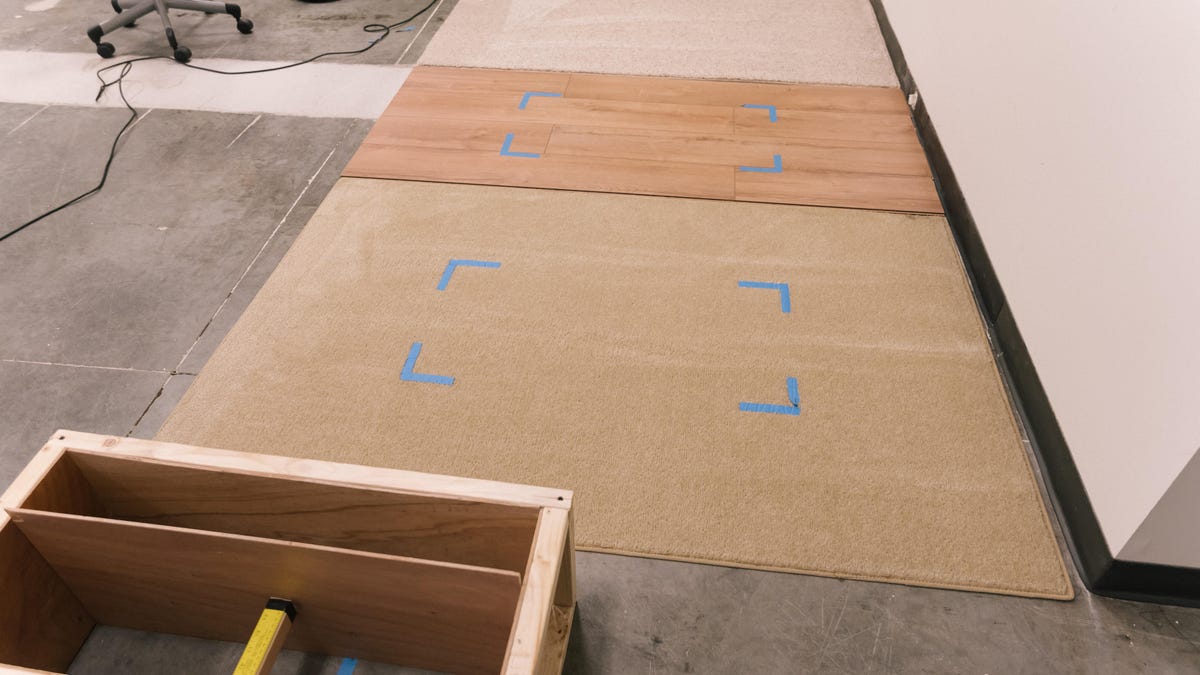
We test robot vacuums on three types of floor surfaces.
Tyler Lizenby/CNETWe control for the specific nozzle width of each vacuum, too. We constructed an adjustable tool to soil our test floors. It lets us lay down a strip of a precise area of soil to match the nozzle dimensions for every robot. The mass of soil isn't chosen at random either. We measure a proportional amount that's related to the flooring material, type of debris, plus each vacuum's nozzle width.
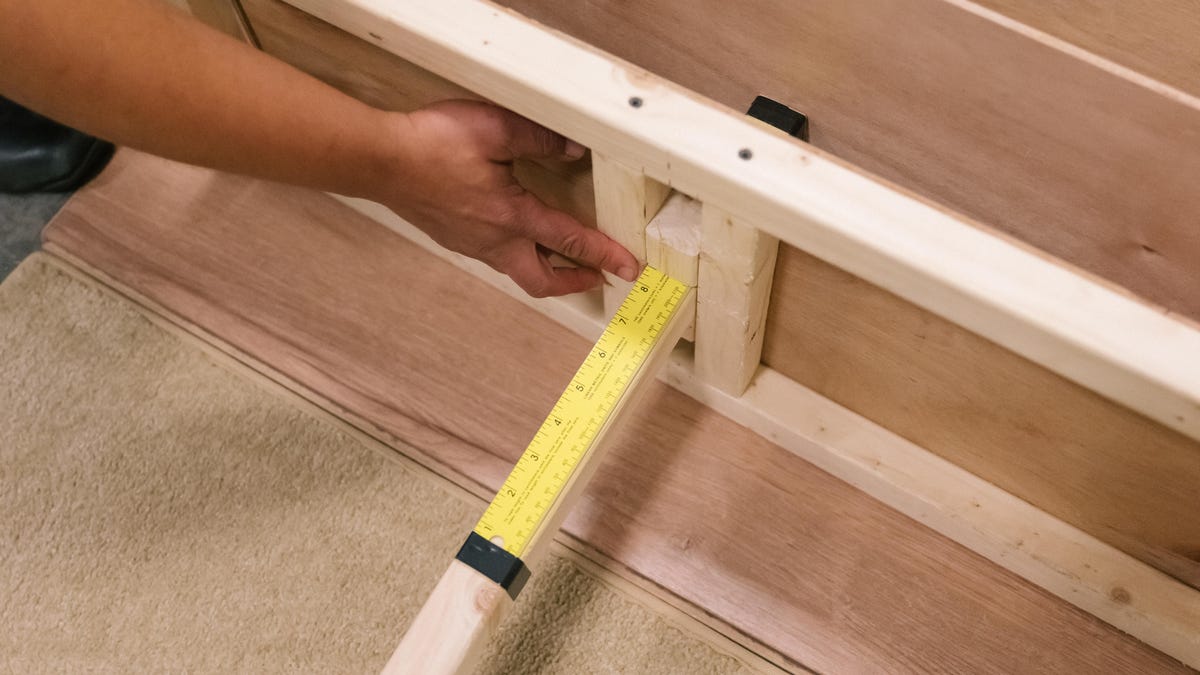
Our custom-built tool lets us match soil area to a robot vacuum's nozzle width.
Tyler Lizenby/CNETWe conduct three cleaning runs (at minimum) on each floor type. We also perform cleaning tests with sand and rice separately. That comes to at least 18 tests per robot vac. We weigh the robot's dustbin both before and after each run. From there we can calculate the percentage of debris pickup for every cleaning run and the average amount of soil a machine manages to remove. Additionally we run anecdotal (visual) pet hair tests for each robot, on all three floor types.
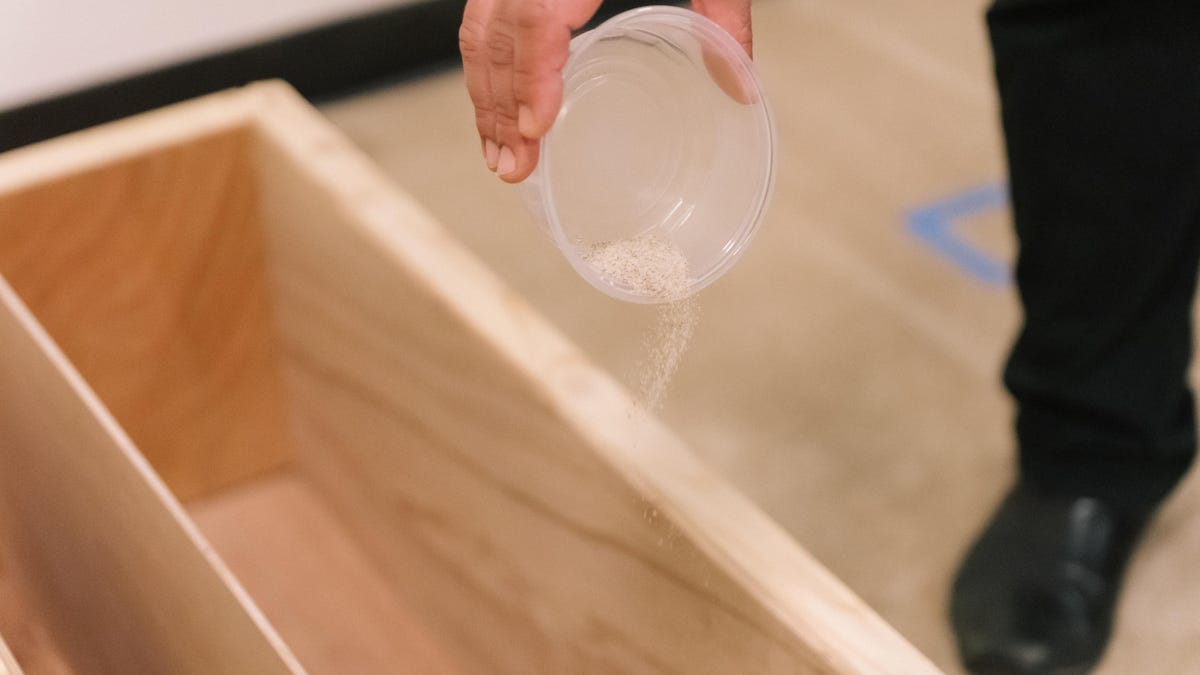
We test for cleaning prowess for small particles (sand) and larger particles (black rice).
Tyler Lizenby/CNETOur rice-based, medium-size particle test didn't show enough differentiation between each cleaner, which says they can all handle larger particles without trouble. For fur removal for pet owners, we judged anecdotally.
How we test cordless vacuums for pet hair
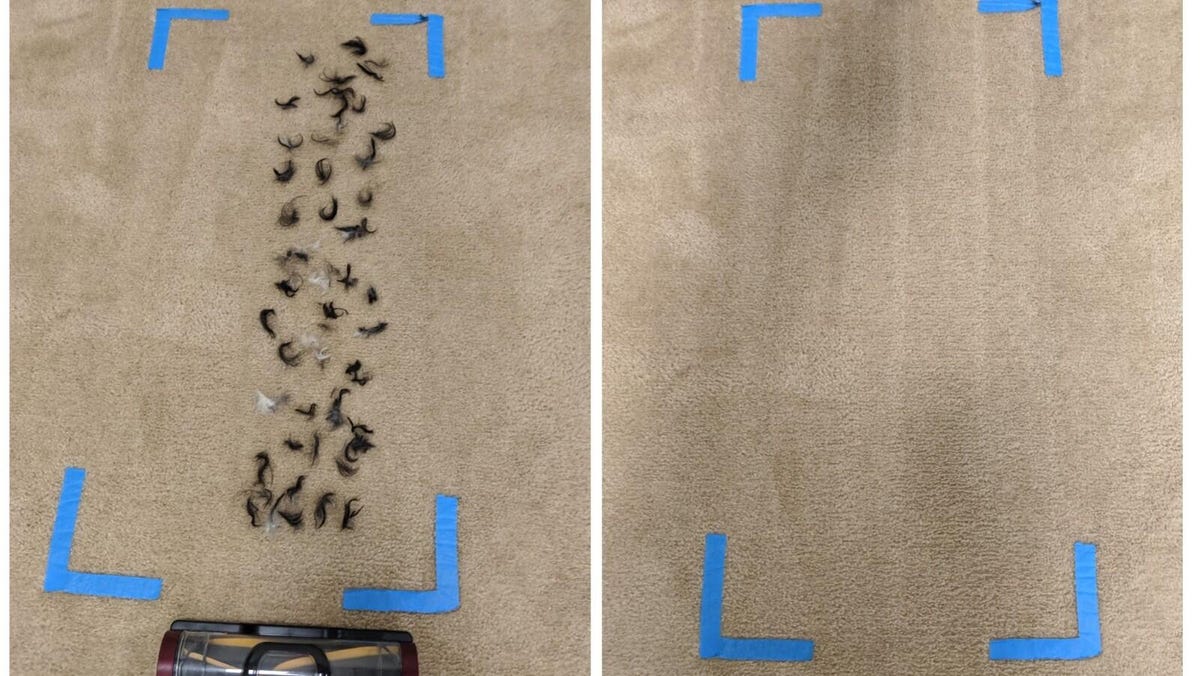
We run tests in a straight line across all three floor types.
Brian Bennett/CNETJust like in robot tests, the width of the test bed is proportional to the vacuum's nozzle width. We measure this width ourselves. We also use nozzle width, plus the flooring type, to calculate the soil density for each test, per IEC guidelines. We use the same soil types here as well; sand, rice and pet hair. We perform three runs (at minimum) on each floor type. We also test suction power with sand and rice separately. That comes to at least 18 tests per vacuum. We weigh the vacuum's dust bin both before and after each run.
From there we can calculate the percentage of dirt and debris pickup for every run and the average amount of soil a vacuum manages to remove. Additionally, we run anecdotal (visual) pet hair tests for each vacuum, on all three floor types to help us select the best cordless vacuum.
Pet hair vacuum FAQs
A lot goes into making a good vacuum, but for getting pet hair picked up, it needs a few extra features. First, a good pet hair vac should have strong suction and an efficient cleaning brush. These two things work together to scrape the hair from the flooring, especially the carpet, and then pull it off the brush and into the dustbin. Another feature that helps this process work fluidly is a brush that's engineered specifically to reduce the chances of it getting tangled in hair.
Suction power for robot vacuums and stick vacs is calculated differently, making it challenging to compare head-to-head. However, you can use each type of measuring method to help inform you how much suction each style of cleaning tool offers. Robot vacuums use units of Pascal or "Pa" to indicate the suction power for these devices, with a range between 850 and 12,000 PA, with most averaging between 3,000 and 6,000 Pa.
For stick vacs, the standard unit of measurement is air watts, or "AW," to give consumers an idea of the vacuum's suction power. AW combines water lift and airflow methodologies and is recognized by the American Society of Testing and Materials.
Each vacuum style can offer long-term cleaning ability should you properly maintain your machine. This includes removing clogs and periodically giving the vacuum a deep clean. Generally, especially for cheap stick vacs, fewer things can go wrong and cause the unit to become less reliable. Robot vacuums rely on sensors and more moving parts to properly clean your floors. Then there's an app and other software aspects that can sometimes cause issues. This is not common, but it is something to be aware of.
When you subscribe to the blog, we will send you an e-mail when there are new updates on the site so you wouldn't miss them.



Comments